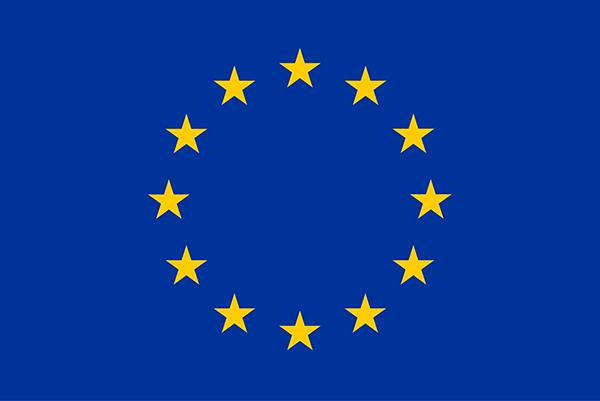- Industry
- Region
- Country / Region
On 20 May 2024, India's Directorate General of External Trade (DGFT) issued Circular No. 13/2024-25 amending the provisions on the importation of electronic and IT products in the Foreign Trade Policy 2023 and the ITC HS 2022 Schedule 1 Import Policy. Emphasise that electronic and IT products, whether imported as new or second-hand, must be registered with the Bureau of Indian Standards (BIS) and comply with BIS labelling requirements prior to importation. The version of the BIS Compulsory Registration Scheme has been updated from 2012 to 2021.
Click this link to view the original notification.
On 15 May 2024, South Africa's Independent Communications Authority (ICASA) published the RFSAP IMT2300, a radio frequency spectrum allocation scheme for the 2300 MHz to 2400 MHz bands.
Click this link to view the original RFSAP IMT2300.
On May 13, 2024, Indonesia's General Directorate of Postal and Information Technology Resources and Equipment (SDPPI) issued Decree No. 260 of 2024 on Technical Standards for Short Range Equipment (SRD). The new regulations assign new frequencies to the following devices:
- RFID for the 433-434.79 MHz and 2400-2483.5 MHz bands;
- Ultra-wideband (UWB);
- Wireless personal area networks (WPANs) in the bands 314-316 MHz, 433-434.79 MHz, 920-923 MHz;
- cordless telephones;
- wireless power transfer (WPT);
- Intelligent Transportation Systems (ITS);
- 169.400-169.475 MHz band for assistive listening devices;
- medical devices in the 216-217 MHz and 402-405 MHz bands;
- Radar sensor devices in the 57-64 GHz band.
On May 10, 2024, the Ministry of Communications and Media (MIC) of Vietnam issued a circular numbered 04/2024/TT-BTTTT to adjust the frequency band planning of mobile communication systems. The announcement is about the deployment of the 880-915 MHz and 925-960 MHz frequency bands for IMT public terrestrial mobile communication systems in Vietnam, and will take effect on June 24, 2024.
The circular aims to standardize the deployment of IMT-2000, IMT-Advanced, IMT-2020 and future standards in Vietnam to ensure the efficient use of wireless frequencies.
Click on this link to view the original text of Circular No. 04/2024/TT-BTTTT.
On May 9, 2024, the National Telecommunications Commission (NTC) of the Philippines issued a notice of public hearing on the proposed memorandum notice regarding the "Amendment to Section 2 of Memorandum Notice 03-05-2007" to add the frequency band 5925-6425MHz for Wi-Fi 6 networks. The public hearing will be held on May 23, 2024. For the Wi-Fi 6E band, it will be divided into two scenarios: indoor and outdoor, where the allowable power is 250 mW (24 dBm) indoors and 25 mW (14 dBm) outdoors.
Click this link to view the original public consultation.
On 7 May 2024, the European Commission published a Notice of Guidance for the Interpretation of the Common Charger Directive in the Official Journal of the European Union to assist in the interpretation and implementation of Directive (EU) 2022/2380. In the form of a Q&A, the guide answers some of the most frequently asked questions about the Common Charger Directive with a total of 51 questions, such as whether it only applies to rechargeable devices; whether products that only support wireless charging can be exempted; whether products that only support DC charging (without AC/DC adapters) can be exempted; whether products with a maximum power of more than 240W can be exempted; whether the regulations cover USB cables, etc.
Click on this link to view the original Common Charger Directive Interpretation Guide.
On May 5, 2024, GCF released GCF-CC 3.93.0. The changes in the test bands are as follows:
- Deleted frequency bands: None;
- New frequency bands: CA_3A-20A+3A-20A, CA_3A-7A+3A-7A, CA_7A-20A+7A-20A, CA_20A-32A, CA_3A-32A, CA_20A-32A_RX4, CA_3A-32A_RX4, DC_1A_n41A, DC_41A_n77A, DC_21A_n257G, DC_3A_n257G, DC_18A_ n257I、DC_1A_n78C、DC_3A_n78C、DC_5A_n78C、DC_19A_n78(2A)、DC_21A_n78(2A)、DC_13A-66A_n77A、DC_2A-13A_n77A、DC_2A-66A_n77A、DC_13A-66A_n2A、CA_DL_n1A-n28A、CA_DL_n28A-n77A、CA_DL_ n3A-n77A、CA_UL_n28A-n77A、CA_UL_n3A-n77A、CA_UL_n1A-n3A、CA_UL_n3A-n78A、CA_UL_n28A-n78A、CA_DL_n1A-n3A-n28A。
GCF-CC 3.93.0 will be effective from May 5, 2024, will be mandatory since August 13, 2024 (when GCF-CC 3.92.0 will expire at Aug 12, 2024) and valid until November 11, 2024.
The European Commission launched a public consultation on the operation of Regulation (EU) 1025/2012 on 2 May 2024. They are important for identifying deficiencies in existing legislation and for developing the European standardization system in the future. Consulting stakeholders will provide valuable information for the assessment.
Click this link to check the original public consultation, and the consultation is open until 25 July 2024.
On May 2, 2024, the U.S. Federal Communications Commission (FCC) released a draft proposal numbered DOC-402325A1, which was sent to nine partners in the FCC for comments. The draft would prohibit any testing laboratory or certification body (TCB) directly or indirectly owned or controlled by an entity on the Covered List from participating in any work related to the certification of equipment. The proposed rules in the draft would ensure that wireless device authorizations are not affected by any entity that is considered a national security issue. The FCC will discuss this at its May 23 meeting, and if it is approved, it will be posted to the federalregister website for further public comment.
Click this link to view the original draft proposal DOC-402325A1.
On April 30, 2024, the Ministry of Communications and Media (MIC) of Vietnam issued a circular numbered 03/2024/TT-BTTTT to adjust the frequency band planning of mobile communication systems. The announcement is about Vietnam's deployment plan for IMT public terrestrial mobile communication systems in the frequency bands 1710-1785 MHz and 1805-1880 MHz, which has come into effect on June 10, 2024.
The circular aims to standardize the deployment of IMT-2000, IMT-Advanced, IMT-2020 and future standards in Viet Nam to ensure the efficient use of wireless frequencies.
Click on this link to view the original text of Circular No. 03/2024/TT-BTTTT.





